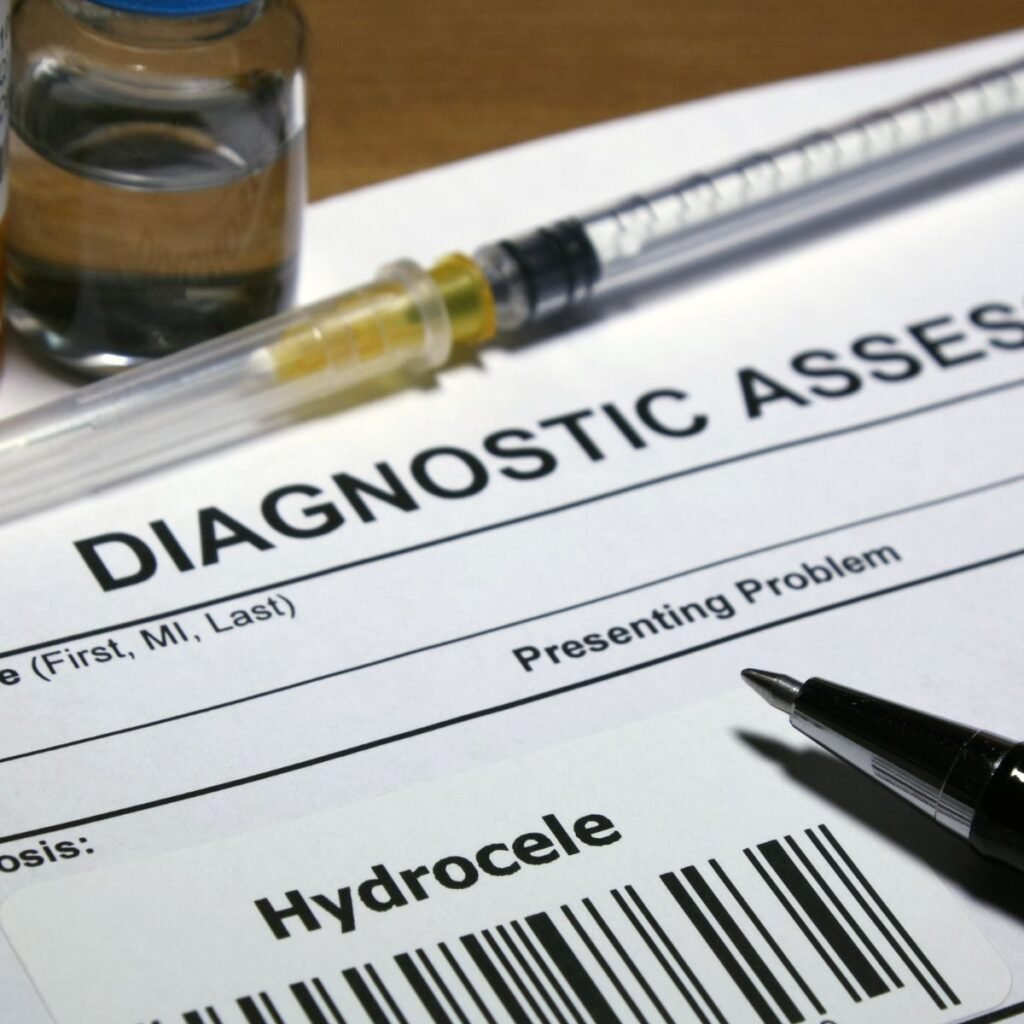Hydrocele is a condition that, while often painless, can cause significant concern for those affected. Characterized by the accumulation of fluid around one or both testicles, a hydrocele can result in swelling and discomfort. Though it’s commonly associated with newborns, adult men can also develop hydroceles due to various factors. In this blog, we’ll explore what hydrocele is, its causes, symptoms, and the available treatment options.
What is a Hydrocele?
A hydrocele occurs when fluid builds up in the thin sheath surrounding the testicle, leading to swelling. While the condition is generally painless, the swelling can be quite noticeable and may cause discomfort, particularly when the swelling becomes large.
Hydroceles are classified into two types:
- Congenital Hydrocele: Present at birth and often resolves on its own within the first year of life.
- Acquired Hydrocele: Develops later in life, often due to injury, infection, or inflammation in the scrotum.
Causes of Hydrocele
Understanding the underlying causes of hydrocele is essential for proper diagnosis and treatment. Some common causes include:
- Injury or Trauma: Physical injury to the testicular area can lead to inflammation and fluid accumulation, resulting in a hydrocele.
- Infections: Conditions like epididymitis (inflammation of the epididymis) or orchitis (inflammation of the testicles) can cause a hydrocele.
- Post-Surgery Complication: Hydrocele can sometimes develop after surgery in the scrotal or inguinal area.
- Inflammatory Conditions: Chronic conditions such as filariasis, a parasitic infection, can cause hydrocele.
Symptoms of Hydrocele
Hydrocele symptoms are usually limited to swelling in the scrotum. Other possible symptoms include:
- Painless Scrotal Swelling: The most common sign is a smooth, painless swelling in one or both testicles.
- Discomfort or Heaviness: Some men may experience a feeling of heaviness or discomfort in the scrotum.
- Increased Swelling Throughout the Day: Swelling may increase over the course of the day, especially if the patient is active or standing for long periods.
It’s important to note that the presence of swelling doesn’t necessarily indicate a hydrocele, and a proper medical evaluation is essential to rule out other conditions, such as testicular cancer.
Diagnosis
If you notice unusual swelling or discomfort in the scrotum, it’s crucial to seek medical advice. A hydrocele can be diagnosed through a physical examination, during which the doctor may use a technique called transillumination. This involves shining a light through the scrotum; if the swelling is due to a hydrocele, the light will pass through the fluid, indicating the presence of a hydrocele.
In some cases, further imaging tests like an ultrasound may be necessary to confirm the diagnosis and rule out other potential causes.
Treatment Options
Treatment for hydrocele depends on the severity of the condition and the discomfort it causes. In many cases, particularly with newborns, a hydrocele will resolve on its own without the need for treatment. However, if the condition persists or causes discomfort, medical intervention may be required.
- Watchful Waiting: For many adult men, a hydrocele may not require immediate treatment. If the swelling is not causing significant discomfort, doctors may recommend monitoring the condition to see if it resolves on its own.
- Surgical Treatment: If the hydrocele is large, painful, or persistent, surgical intervention may be necessary. The procedure, known as a hydrocelectomy, involves draining the fluid and removing the sac that causes the fluid buildup. This surgery is typically performed on an outpatient basis, and recovery time is usually short.
- Aspiration and Sclerotherapy: For men who are not good candidates for surgery, an alternative treatment involves using a needle to drain the fluid (aspiration) followed by the injection of a sclerosing agent to prevent the fluid from reaccumulating. This method is less invasive but may not be as effective as surgery in preventing recurrence.
Conclusion
Hydrocele is a condition that, while generally not harmful, can cause significant discomfort and concern. If you notice any unusual swelling or changes in the scrotum, it’s essential to consult a healthcare professional for a proper diagnosis and to discuss the best treatment options. Remember, while hydrocele is typically benign, ruling out other more serious conditions is crucial for your peace of mind and overall health.
If you have any questions or need further information, feel free to contact our clinic. We’re here to provide the support and care you need.

